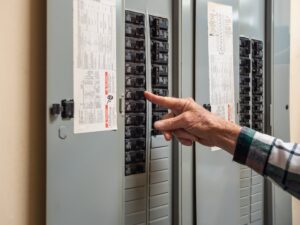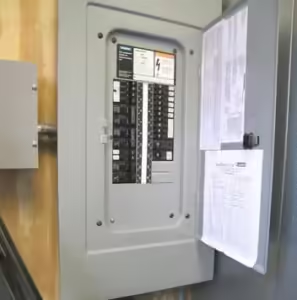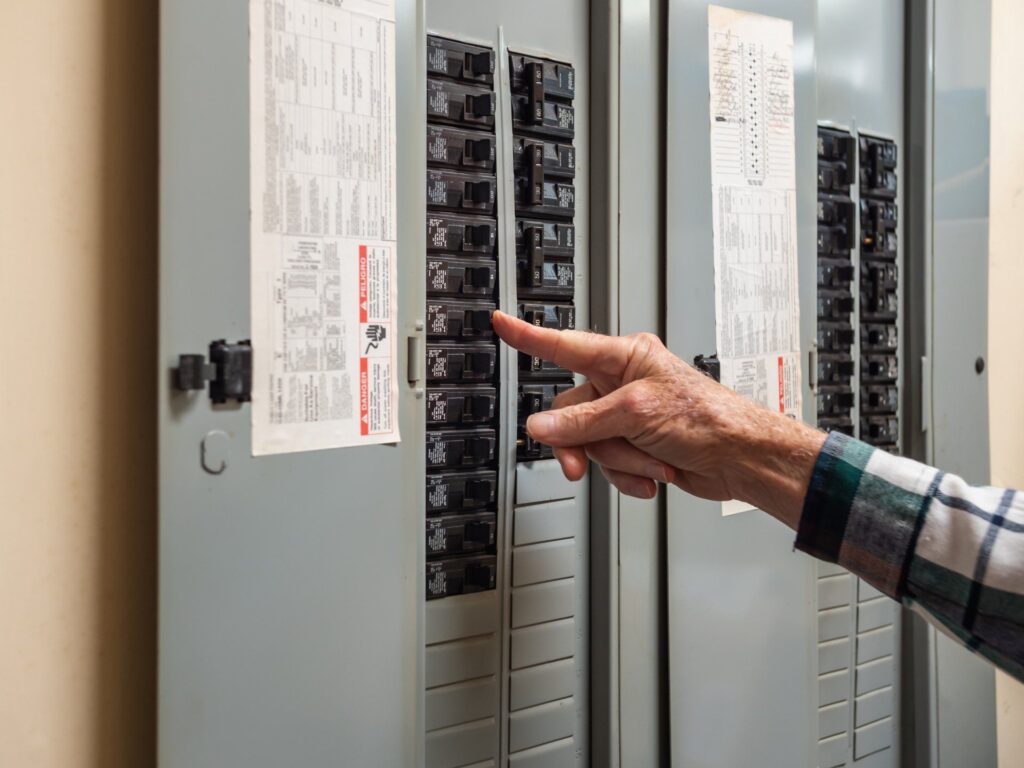What are the different types of electrical panels?Electrical panels, also known as breaker panels, distribution boards, or load centers, are essential components in a building’s electrical system. They serve as the central hub for distributing electricity from the utility to various circuits within the building.
Understanding the different types of electrical panels and their applications is crucial for ensuring the safety, reliability, and efficiency of an electrical system. Here, we will explore various types of electrical panels, their functions, components, and applications.
1. Main Breaker Panel
Definition
The main breaker panel is the primary distribution point for electrical circuits in a home or building. It contains a large breaker that can shut off power to the entire panel, hence providing a crucial safety function.
Components
- Main Breaker: This controls the power to all the circuits in the panel.
- Circuit Breakers: Individual breakers that control and protect each circuit.
- Bus Bars: Metal strips that conduct electricity from the main breaker to individual circuit breakers.

Applications
- Residential homes
- Small commercial buildings
Benefits
- Central control for all circuits
- Enhanced safety with a single shut-off point
2. Main Lug Panel
Definition
A main lug panel does not have a main breaker. Instead, it is connected to a main breaker located upstream, often at the meter.
Components
- Lug Connectors: Used to connect the incoming power wires to the bus bars.
- Circuit Breakers: Protect individual circuits.
- Bus Bars: Distribute electricity to the breakers.
Applications
- Sub-panels in residential or commercial settings
- Secondary panels in large buildings
Benefits
- Cost-effective
- Suitable for expanding existing systems
3. Sub Panel
Definition
A sub-panel is a smaller panel that extends the wiring system from the main panel. It is used to distribute power to a specific area or large appliance.
Components
- Feeders: Wires that carry electricity from the main panel to the sub-panel.
- Circuit Breakers: Control and protect individual circuits within the sub-panel.
- Bus Bars: Distribute electricity to the breakers.
Applications
- Detached garages or workshops
- Additions or renovations in a home
- Specific heavy-duty appliances
Benefits
- Reduces the load on the main panel
- Provides localized control and distribution
4. Transfer Switch Panel
Definition
A transfer switch panel is used in conjunction with a generator to transfer the electrical load from the main power source to the generator in case of a power outage.
Components
- Manual or Automatic Transfer Switch: Shifts the electrical load between the main power source and the generator.
- Circuit Breakers: Protect the circuits.
- Generator Input: Connects to the generator.
Applications
- Homes with backup generators
- Critical facilities like hospitals and data centers
Benefits
- Ensures continuous power supply during outages
- Enhances safety by preventing backfeeding
5. Fuse Box
Definition
A fuse box is an older type of electrical panel that uses fuses instead of circuit breakers to protect circuits.
Components
- Fuses: Sacrificial components that melt and break the circuit when overloaded.
- Bus Bars: Conduct electricity to the fuses.
Applications
- Older homes and buildings

Benefits
- Simple design
- Effective for small electrical systems
6. Load Centers
Definition
Load centers are versatile electrical panels used to distribute power in residential, commercial, and industrial settings. They can serve as main breaker panels, main lug panels, or sub-panels.
Components
- Main Breaker or Lug Connectors: Depending on the type.
- Circuit Breakers: Protect individual circuits.
- Bus Bars: Distribute power to the breakers.
Applications
- Homes
- Commercial buildings
- Industrial facilities
Benefits
- Flexible configurations
- Suitable for various applications
7. Commercial and Industrial Panels
Definition
Commercial and industrial panels are designed to handle higher electrical loads and are often used in large buildings and manufacturing facilities.
Components
- Heavy-Duty Breakers: Rated for higher amperages.
- Bus Bars: Designed to handle large currents.
- Surge Protection Devices: Protect against voltage spikes.
Applications
- Office buildings
- Factories
- Warehouses
Benefits
- High capacity for large loads
- Enhanced durability and safety features
8. Smart Panels
Definition
Smart panels integrate advanced technology to provide real-time monitoring and control of the electrical system through a digital interface.
Components
- Smart Breakers: Communicate data and can be controlled remotely.
- Sensors: Monitor electrical parameters.
- Digital Interface: Provides access to system data and controls.
Applications
- Modern homes and buildings
- Smart grids
- Energy management systems
Benefits
- Enhanced control and monitoring
- Improved energy efficiency
- Predictive maintenance capabilities
Conclusion
Selecting the right type of electrical panel is crucial for the safety, efficiency, and reliability of an electrical system. Each type of panel has its unique features and applications, making it suitable for specific scenarios. Main breaker panels and main lug panels are commonly used in residential settings, while sub-panels and transfer switch panels provide additional flexibility and backup power solutions. Fuse boxes, although outdated, still exist in older buildings. Load centers offer versatility for various applications, and commercial and industrial panels are designed for high-capacity needs. Lastly, smart panels represent the future of electrical distribution with their advanced monitoring and control capabilities.
Understanding the components, applications, and benefits of each type of electrical panel helps in making informed decisions for both new installations and upgrades. Proper selection and maintenance of electrical panels are key to ensuring a safe and efficient electrical system in any building.
Read Also. Are The Bubbles on a Pool Cover Supposed to be Up or Down?

